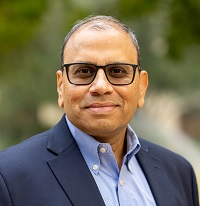Sustainability and the digital twin’s energy resource impact – Summary

Our discussion continues in the fourth podcast episode of our sustainability series, focusing on energy resources and the machine operation’s impact on driving sustainability in the industrial machinery industry.

Again, we welcome our experts, Eryn Devola, Head of Sustainability at Siemens Digital Industries Software, a mechanical engineer spending over 20 years in the industry, and Rahul Garg, VP of Industrial Machinery and SMB Business Program at Siemens Digital Industries Software, an electrical computer engineer, instrumental in the design and development of software and other activities for 30 years.

In the world of machine operations and sustainability, a compelling statistic shows that only a one percent reduction in the industrial carbon footprint of production could mean reducing carbon emissions by 70 million tons annually – a fantastic stat.
OT/IT convergence controls, predicts, and orchestrates energy usage
Furthermore, you can better manage this impact by using OT/IT convergence to control and predict production floor occurrences and orchestrate equipment energy use to optimize and minimize startups and shutdowns. This technology also helps ensure that the line going down for material problems receives the best conversion of those resources.
In durable products, that intelligence, by running the machinery, collects, understands, and identifies the user and energy profiles and optimizes them. This process is a direct path to drive sustainability through industrial machinery. Also, waste recyclability significantly impacts resources in machine function production by cooling the machine and the parts.
All these factors play a part in the overall sustainability of production, using 1.7 percent of the Earth’s natural resources annually. However, it is suggested that this amount be reduced by 59 percent for the Earth to renew the resources being taken in. And this statistic does not only factor in CO2, but water and other considerations. When recapturing wasted items, generated heat is also a factor, turning it into energy to reuse for other purposes. These scenarios are the circularity models, where industrial machinery can play a significant role in solving problems.
Machine performance and maximum utilization via a digital twin
Most companies want to improve a machine’s overall performance and change the throughput to maximize machine utilization. Additionally, it’s becoming essential to optimize it for sustainability, as energy resource efficiency has a significant impact on the planet.
Therefore, it is critical to have a digital twin simulate many variations, ensuring correct choices for design creation, including materials chosen to optimize water, energy efficiency, and waste. Ultimately, it’s vital to design the machine for end-of-life recycling disassembly. These are all critical decisions in performing the process by leveraging a comprehensive digital twin and a total digitalization solution for optimization.
These choices are made early in the process by leveraging digitalization technologies. For instance, technologies like virtual commissioning can help by combining capabilities in a virtual format without building or constructing a single part. Therefore, if a mishap occurs in the virtual world, you can start over, taking advantage of the digital twin’s benefits and leveraging it to reduce time and cost. A digital twin helps test and optimize operations, making production more flexible and predictive.
It’s one more step to achieving better sustainability in industrial machinery manufacturing.
Learn more in the podcast.
Siemens Digital Industries Software helps organizations of all sizes digitally transform using software, hardware and services from the Siemens Xcelerator business platform. Siemens’ software and the comprehensive digital twin enable companies to optimize their design, engineering and manufacturing processes to turn today’s ideas into the sustainable products of the future. From chips to entire systems, from product to process, across all industries. Siemens Digital Industries Software – Accelerating transformation.


